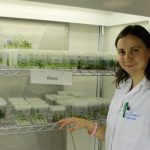About the Seminar:
Work at the intersection between Physical Chemistry and Virology in our laboratory has recently brought to light a new aspect of the hotly–debated relationship between quantum mechanics and biology, and of the boundary between quantum and classical behavior. Specifically, we have found that some small, icosahedral plant viruses are capable of fostering quantum coherence among virus-bound light emitting chromophores at room temperature, and in physiological conditions. By exciting many chromophores covalently-bound to a virus capsid with a short laser pulse, we discovered that the dynamics of light emission has all the hallmarks of optical super-radiance (SR) — a phenomenon requiring spontaneous emitters synchronization and limited preservation of a collective, quantum coherent state. Up to now, this phenomenon has been observed and studied at cryogenic temperatures or high fields, but very recent investigations have also found SR at room temperature in N-vacancy diamond particles, and in hybrid organic-perovskite thin films. What do N-vacancies in diamond, perovskites, and viruses have in common? We formulate a hypothesis which is based on some unique physical characteristics of engineered, multi-chromophore virus-like particles (VLPs). These properties may lend such small icosahedral viruses into scaffolds suitability to sustain (for a limited time) quantum coherence at room temperature, where collisional dephasing is generally expected to suppress quantum coherence. We propose that virus shell symmetry and genome elastic stresses influence virus-shell vibrations (phonons), which in turn leads to the unusual collective photonic properties.



